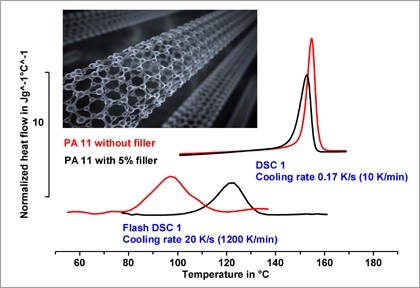
In the webinar titled "Thermal Analysis of Nanomaterials", we describe a number of techniques and methods that can be used to characterize these materials and their effects.
Properties and Uses of Nanomaterials
Nanomaterials have very diverse properties: These are made use of in many applications. For example, inefficient or unfavorable chemical reactions can sometimes be improved by means of catalysts. Catalytic activity is usually increased with nanoparticles because of their greatly increased surface area.
Mechanical properties can also be changed using nanoparticles. This is done by mixing a certain amount of nanoparticles in with the bulk material, which then changes the mechanical properties of the matrix.
Anti-bacterial properties are used in the manufacture of clothing that is marketed as “odor-free”. The clothing is impregnated with silver nanoparticles. This kills any bacteria present on the skin thereby stopping the production of unpleasant odors.
The small size of nanoparticles also makes them ideal as nucleating agents for larger molecules that would otherwise have difficulty crystallizing on their own.
Nanomaterials can also be materials that have functional geometries on a nanoscale, for example silica gels or molecular sieves.
Some magnetic properties may also depend on particle size. If a particle made of a ferromagnetic material becomes too small, the activation energy needed to change its direction of magnetization becomes low enough for the magnetization to change at room temperature.
Thermal Analysis of Nanomaterials
The most important effects that can be analyzed by DSC are the glass transition, melting, crystallization behavior, reaction enthalpies and kinetics, and the influence of fillers.
For TGA, the main applications are content analysis and thermal stability.
TMA is normally used to study the expansion or shrinkage of materials.
DMA is the best method for characterizing the frequency-, force-, and amplitude-dependent mechanical behavior of materials.